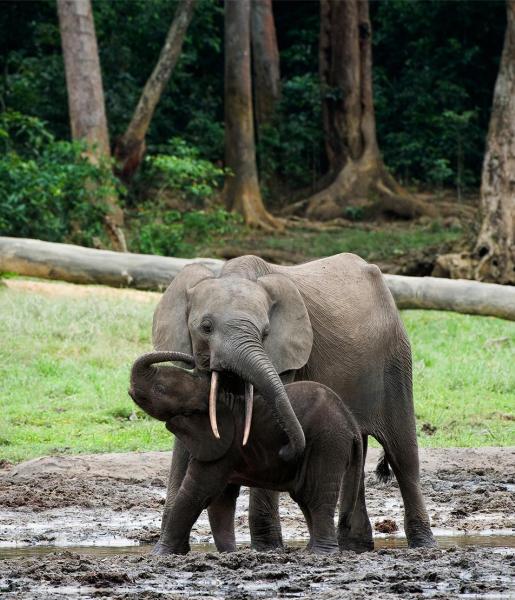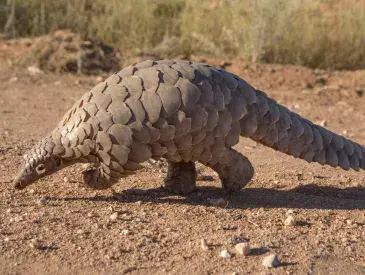What are forest elephants?
Long considered to be a subspecies of the African elephant, the African forest elephant is now considered by many scientists to be its own species — separate from the African savanna or bush elephant. They are smaller than the better-known savanna elephant, have tusks that are straight and point downward, unlike the savanna elephants curved tusks. Bulls sometimes have tusks that almost reach the ground. They have rounded ears while the savanna elephant’s ears are more pointed. This species of the African elephant also has five toenails on each forefoot and four on its hind feet — more similar to that of the Asian elephant.
Loxodonta cyclotis
3 to 6.6 tons
Nearly 3 meters in height (nearly 10 feet) 1 to 3 meters in length (3 to 10 feet)
60 to 70 years
Lowland, tropical rainforests
Herbivorous
22 to 24 months
Humans

Challenges
Forest elephants have been cursed with ivory.
Like all elephants, they have beautiful tusks on either side of their faces. Unfortunately, this ivory makes it a target for poachers who slaughter elephants to obtain it. The tusks of these forest-dwelling elephants are denser and more desirable to carvers than the ivory of any other species. About 62 percent of all forest elephants have been killed for their ivory in the last decade.
Their elusiveness makes them difficult to conserve.
Scientists are just beginning to understand the forest elephant’s habits, patterns, and movements. Lack of knowledge is a barrier to protecting this critically endangered elephant species.
Forest elephants have the slowest reproductive rate of the three elephant species.
The sexually mature age of the forest elephant is not until 23 and then the average gestation period is about two years. In this case, any population decline caused by poaching, bushmeat trade, logging operations, and natural resource extraction is more devastating. If poaching stopped today, then scientists say it would take 81 years to reverse the 62 percent decline experienced in the last decade.
Solutions
Our solutions to protecting the critically endangered forest elephant:
African Wildlife Foundation is funding research, like the PLOS ONE study, to create comprehensive data on the forest elephant. This groundbreaking study has the largest dataset on this species and its findings showed that their population has declined dramatically — by 62 percent — in the last decade.


Behaviors
Their forests need them as much as they need their forests.
Forest elephants ensure the survival of their ecosystems. They maintain biodiversity — by dispersing plants — in one of the Earth’s critical carbon sequestering tropical forests. They also clear paths that other animals depend upon.
Forest elephants are a mystery to humans.
While scientists have begun studying this species, there is much less known about them than the more famous savanna elephant. Forest elephants are elusive and there is little scientific data about their ranges, movements, and habitat requirements.
Diet
Forest elephants have a craving for salt.
They are herbivores, eating a diet filled with leaves, high amounts of fruit, and tree bark. They also visit salt, or mineral, licks and even consume soil, which provides them with necessary minerals missing from their diets.
Habitats
Where do forest elephants live?
As their name suggests, these elephants live in Africa’s forests. While they once inhabited a larger range, they now are confined to the tropical forests of equatorial west and central Africa.



